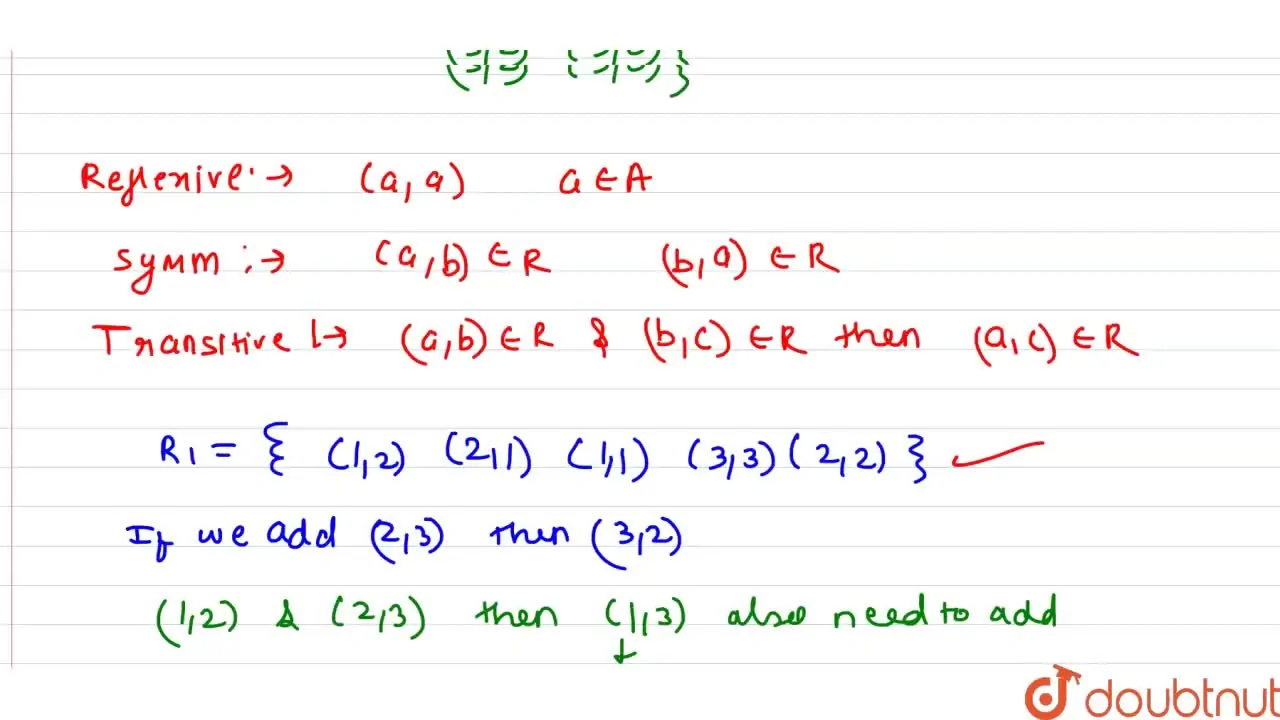Let A={1,2,3}. Then number of equivalence relations containing (1, 2) is
(A) 1
(B) 2
(C) 3
(D) 4
Here, A={1,2,3}
∴ Total possible pairs ={(1,1)(1,2),(1,3),(2,1),(2,2),(2,3),(3,1),(3,2),(3,3)}
∴ Smallest equivalence relation containing (1,2),(R1)={(1,1),(2,2),(3,3),(1,2),(2,1)}
Now, if we add (2,3), then we have to add (3,2) to make it symmetric.
As (1,2),(1,3) are there, we have to add (1,3) also to make it transitive.
As we are adding (1,3), we need to add (3,1) also to make it symmetric.
∴R2={(1,1)(1,2),(1,3),(2,1),(2,2),(2,3),(3,1),(3,2),(3,3)}
These are the two equivalence relations are possible.
So, B is the correct option.
Similar Questions
Let A = { 1,3,5 } . then the number of equivalence relations in A containing (1,3) is ?
View SolutionThe maximum number of equivalence relations on the set A={1,2,3} is
View SolutionLet A = {1, 2, 3}. Which of the following is not an equivalence relation on A ?
View SolutionThe maximum number of equivalence relations on the set A = {1, 2, 3} are
View SolutionLet A = {1, 2, 3). Then number of relations containing (1, 2) and (1, 3) which are reflexive and symmetric but not transitive is
View SolutionThe maximum number of equivalence relations on the set A={1,2,3,4} are
View SolutionThe maximum number of equivalence relations on the set A = {1,2,3,4} are
View SolutionLet A={1,2,3}. Which of the following is not an equivalence relation on A ?
View SolutionShow that the number of equivalence relations on the set {1, 2, 3} containing (1, 2) and (2, 1) is two.
View SolutionLet A={1,3} and B={2,3,4} .Find the number of relations from A to B
View Solution


